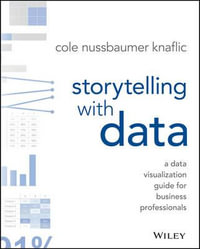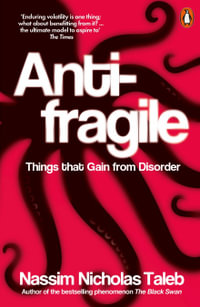In the early 20th century, American earth scientists vociferously opposed the new, and highly radical, notion of continental drift. Yet 50 years later the same idea was heralded as a major scientific breakthrough, and today continental drift is accepted as a scientific fact. Why did American geologists reject so adamantly an idea that is now considered a cornerstone of the discipline? And why did they react so much more negatively than their European counterparts? This book, based primarily on archival resources, provides answers to these questions. It complements existing work on continental drift and the emergence of the theory of plate tectonics by providing the first detailed historical account of the American geological community in the 1920s. It also challenges previous historical work on this episode, much of which ascribes the rejection of continental drift to the lack of an adequate causal mechanism. Instead, the author shows that the rejection was largely based on the view that continental drift challenged the basic methodological principles and standards of practice in American earth science.
In uncovering the historical roots of this debate, the author seeks to clarify the relationship between scientific practice and theory while also providing a test case for related philosophical questions.
Industry Reviews
"Oreskes (Univ. of California, San Diego) argues that 'science is about how belief gets formulated,' and that the criteria used in the formulation of belief are historically contingent and play a significant role in constraining the boundaries of scientific knowledge in a cultural and social context. Using the history of evolution of the continental drift theory, she discusses how US earth scientists came to reject this theory in the 1920s and '30s because
accepting the ideas supporting it would have forced them to change their methodological beliefs and valued forms of scientific practice. Oreskes utilizes the case of the history of continental drift to
show that scientific methodology is diverse and evolves through time, and that the mechanics of scientific research and the context of discovery are important, just as the context of justification is important in evaluating the generation of scientific knowledge. . . . An exemplary resource. Recommended. All levels."--Choice
"With all their resources, American geoscientists do much of the world's best geology. Thus some of them may be embarrassed that their predecessors were so slow to embrace continental drift or convection currents in the mantle and were initially so resistant to the doctrines of plate tectonics. Although there must be historical reasons for this reluctance to accept mobilist doctrines, hitherto they have not been examined in detail. Now Naomi Oreskes has
accomplished the task in The Rejection of Continental Drift. Based on extensive archival research and Oreskes's studies over the past 20 years, her admirably clear and well-illustrated account is
scientifically, philosophically, historically, and sociologically well-informed. All is achieved without recourse to esoteric detail or any mathematics: she is after concepts."--Science
"During the 1920s and '30s, prominent American geologists were generally opposed, sometimes virulently so, to continental drift, a new theory proposed by Alfred Wegener. On the opposite side of a furtively widening transatlantic schism, earth scientists were inclined to explore the idea, or at least to regard it with more muted skepticism. Wegener's original 'theory' was incomplete and mechanically unsound, and some of his European colleagues actually bent
their effort toward developing physical models in support of drift. After all, the theory did summarize a set of observations that hinted at a broader vision of geological mapping than was currently in
vogue. However, Americans appear to have been committed to demonstrating the impossibility of drift. Naomi Oreskes has carefully sifted the archival ashes of the early stages of this conflagration, producing an analysis of scientific practice that challenges previous accounts of the drift controversy."--American Scientist
"On April 7, 1998, there was a note in Eos by David Stern that included a perceptive and amusing quotation from Teddy Bullard on the question, which has been recently reached something of a culmination in an important new book, The Rejection of Continental Drift, by Naomi Oreskes and published by Oxford in 1999."--EOS
"Oreskes (Univ. of California, San Diego) argues that 'science is about how belief gets formulated,' and that the criteria used in the formulation of belief are historically contingent and play a significant role in constraining the boundaries of scientific knowledge in a cultural and social context. Using the history of evolution of the continental drift theory, she discusses how US earth scientists came to reject this theory in the 1920s and '30s because
accepting the ideas supporting it would have forced them to change their methodological beliefs and valued forms of scientific practice. Oreskes utilizes the case of the history of continental drift to
show that scientific methodology is diverse and evolves through time, and that the mechanics of scientific research and the context of discovery are important, just as the context of justification is important in evaluating the generation of scientific knowledge. . . . An exemplary resource. Recommended. All levels."--Choice
"With all their resources, American geoscientists do much of the world's best geology. Thus some of them may be embarrassed that their predecessors were so slow to embrace continental drift or convection currents in the mantle and were initially so resistant to the doctrines of plate tectonics. Although there must be historical reasons for this reluctance to accept mobilist doctrines, hitherto they have not been examined in detail. Now Naomi Oreskes has
accomplished the task in The Rejection of Continental Drift. Based on extensive archival research and Oreskes's studies over the past 20 years, her admirably clear and well-illustrated account is
scientifically, philosophically, historically, and sociologically well-informed. All is achieved without recourse to esoteric detail or any mathematics: she is after concepts."--Science
"During the 1920s and '30s, prominent American geologists were generally opposed, sometimes virulently so, to continental drift, a new theory proposed by Alfred Wegener. On the opposite side of a furtively widening transatlantic schism, earth scientists were inclined to explore the idea, or at least to regard it with more muted skepticism. Wegener's original 'theory' was incomplete and mechanically unsound, and some of his European colleagues actually bent
their effort toward developing physical models in support of drift. After all, the theory did summarize a set of observations that hinted at a broader vision of geological mapping than was currently in
vogue. However, Americans appear to have been committed to demonstrating the impossibility of drift. Naomi Oreskes has carefully sifted the archival ashes of the early stages of this conflagration, producing an analysis of scientific practice that challenges previous accounts of the drift controversy."--American Scientist
"On April 7, 1998, there was a note in Eos by David Stern that included a perceptive and amusing quotation from Teddy Bullard on the question, which has been recently reached something of a culmination in an important new book, The Rejection of Continental Drift, by Naomi Oreskes and published by Oxford in 1999."--EOS
























